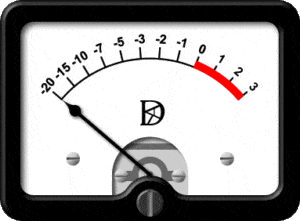 The RST reporting system is represented in three numbers for CW and two numbers for Phone.
The RST reporting system is represented in three numbers for CW and two numbers for Phone.
First number is for Readability (R), the second is for Strength (S), and the last one is for Tone (T) when representing CW signals. The tone is only used for CW (Continuous Wave aka Morse Code) transmissions. Most times the 599, is abbreviated as 5NN for CW only as it is much shorter to send then the actual two nines when using code. Some modes, such as JT65, JT9, FT4 and FT8, for example, use a dB system but more about these later. Here is the generally accepted System:
Basic rule: Higher Numbers are always better.
Readability (R)
- Unreadable
- Barely readable
- Readable with difficulty
- Readable with little difficulty
- Perfectly readable
Strength (S)
- Barely detectable
- Very weak signals
- Weak signals
- Fair signals
- Fairly good signals
- Good signals
- Moderately strong signals
- Strong signals
- Very strong signals
Tone (T)
- Extremely rough note
- Very rough note
- Rough note
- Fairly rough note
- Note modulated with strong ripple
- Modulated note
- Near DC note but with smooth ripple
- Near DC note but with trace of ripple
- Pure DC note

The above is an example of what you will find at the PSKreporter.info website where you can monitor your own transmissions and see where you are heard. You can also setup your WSJT-X and other digital software to send reports back so you can analyze your own receives over a period of time or assist others in analyzing propagation. I HIGHLY recommend doing this. Here you will see that on my FT8 Transmit some decoded me as +13 and others closer as -3, this can be due to skip zones as well as different antenna setups, etc. Different colors are different bands and minutes indicate the last time they heard and reported back automatically.
Examples of non-digital reports would be:
- 59 plus 20 for a really strong USB signal
- 47 for a somewhat weak but still readable USB signal
- 5NN is short for 599 in a CW exchange
- During contest and for DX Expeditions everyone is 59 for Phone (USB/LSB) ad 5NN for CW in order to expedite exchange.
The polite thing to do otherwise is to give an accurate report to the other party so they get a feel for how well their signal is getting through. Some operators do, some don't. I do and I encourage you to do so as well.
Some use the S-Meter on their radios to give the reading, which is fine if it is accurate (it is not...usually as there are many factors) or by ear which frankly is a better way to go about it. But this is my personal opinion.
 For FT8 and many other digital modes (But not RTTY), the values are measured by the software and are expressed in dB such as -10 or +02 for example.
For FT8 and many other digital modes (But not RTTY), the values are measured by the software and are expressed in dB such as -10 or +02 for example.
The higher the better when it comes to decoding, but generally you do not want to come back as positive unless it is a nearby station as this indicates you are running way too much power. As you can see here, I decoded everything from -21 to +05 range on 80m using the WSJT-X Software.
If you find something incorrect, have an update, or if there is something you would like to see added to the site, drop me a line here. I like to keep things as up-to-date and as accurate as possible. Thank you! - Lucas / W6AER

